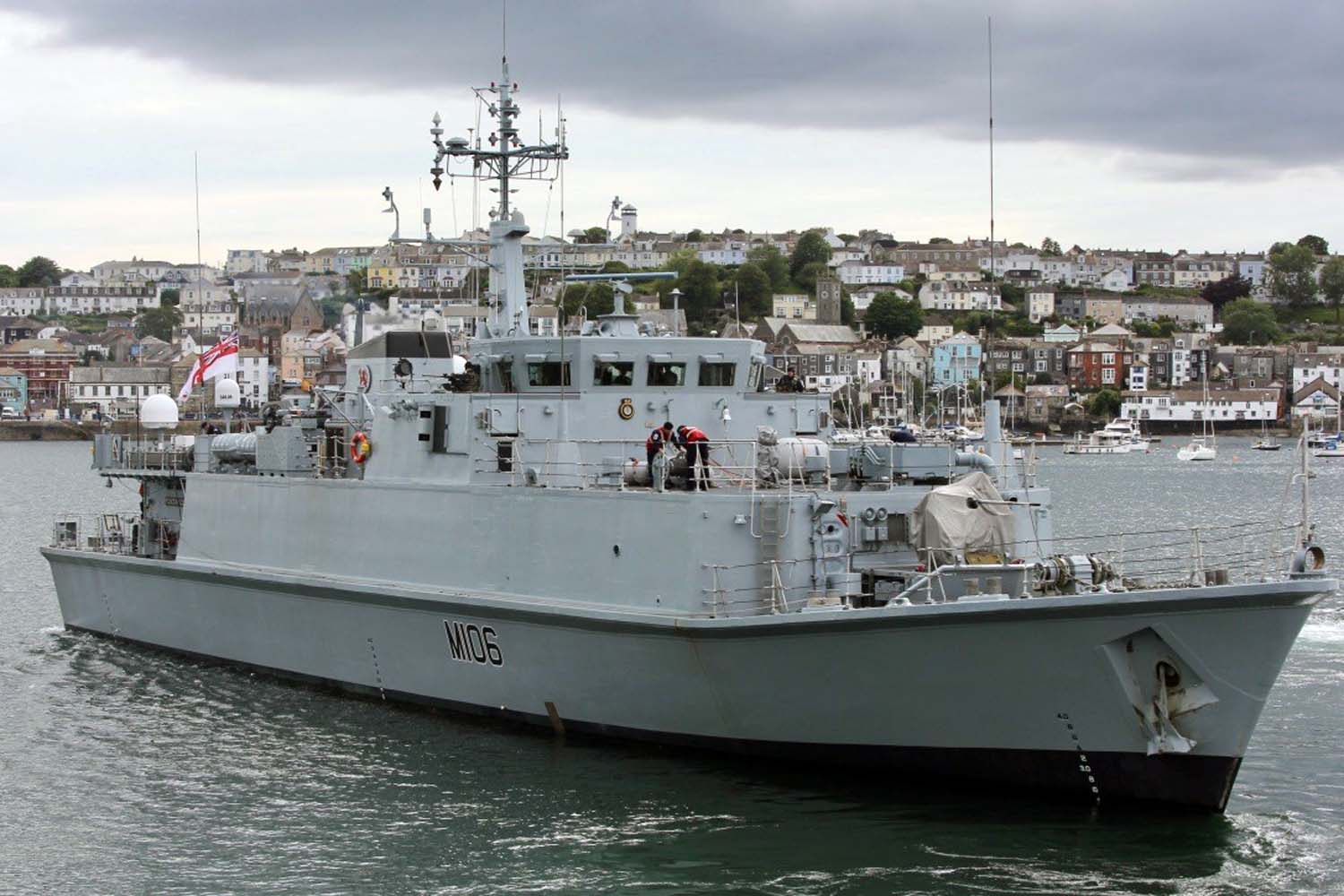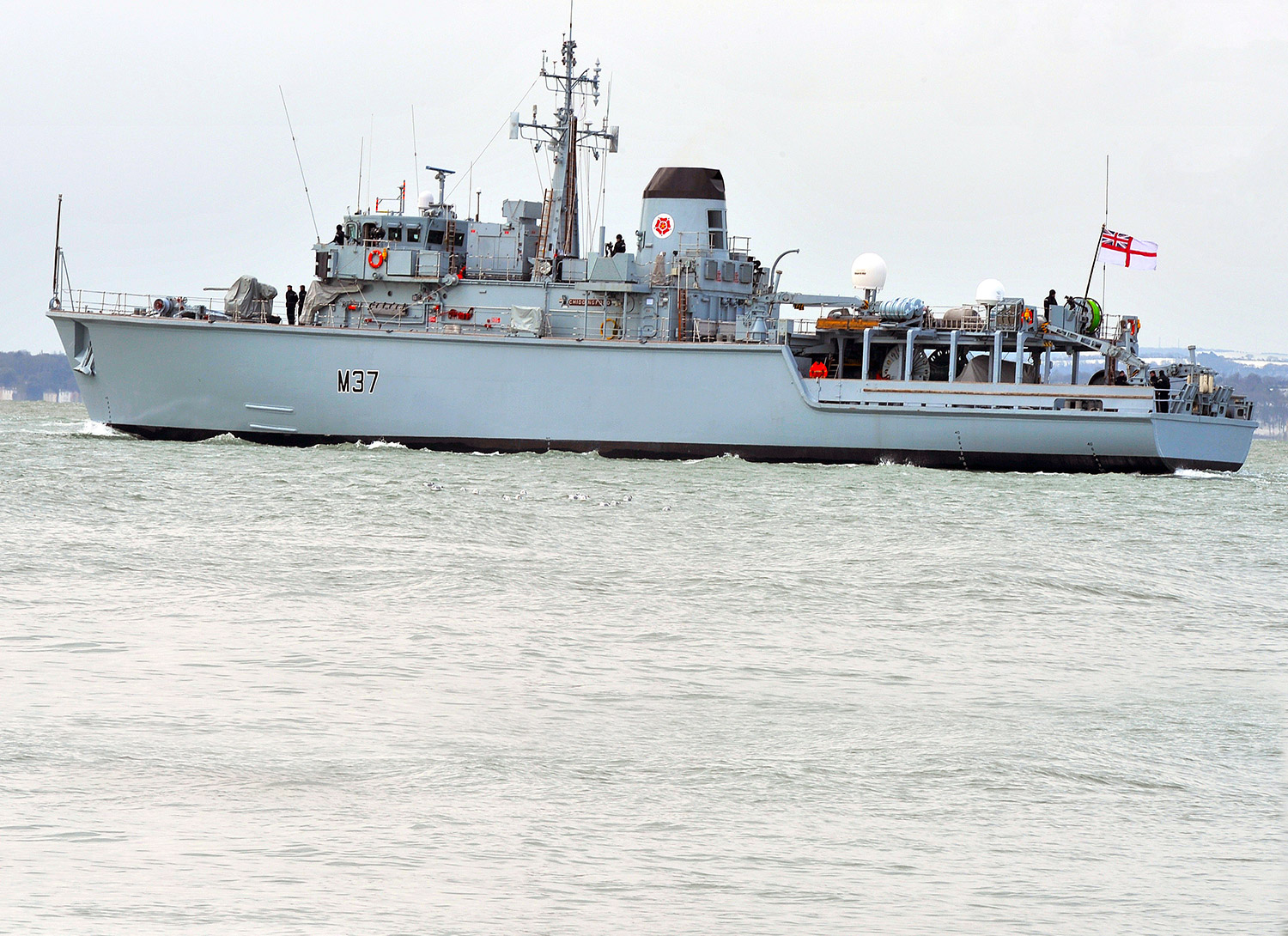Beginning a 6,000-mile odyssey which will take their ships to the Gulf for three years are the crews of minehunters HMS Penzance and Chiddingfold. The latter sailed from Portsmouth today to begin the epic journey to Bahrain, a journey she will share with Penzance which departed her base at Faslane at the end of last week and, after a brief fuel stop in Falmouth, before linking up with Chid in the Atlantic. It’s the second time the two vessels have sailed in company to the Middle East for a three-year tour of duty, having last made the extended trip between 2014 and 2017. Heading back to the UK, mission accomplished, once Penzance and Chiddingfold arrive, are their sister ships HMS Blyth and Ledbury.
The Royal Navy has maintained a four-strong minehunting force – bolstered by a dedicated battle staff and mother ship. Together, they keep the sea lanes open, deter aggression, work with allies and fly the flag for the UK in a part of the world which is key to the nation’s security and economy.The two Gulf-bound ships are the first to switch over to a new crew rotational system – four months aboard instead of six, followed by four months back in the UK on leave/undergoing training, courses, education and the like. The programme is intended to give sailors – 51 on Chid, 40 on Penzance – a more settled life, while getting the maximum out of their vessels on operations in theatre.

HMS Chiddingfold (M37) is a Hunt-class mine countermeasures vessel of the British Royal Navy. She was launched in October 1983 and formally entered the service of the Royal Navy in October 1984. Chiddingfold is a minehunter, and her purpose is to find and destroy mines, not only in a time of war but also in peacetime. There are about a quarter of a million mines still active from the Second World War alone and they pose a major threat to both military and civilian ships. Chiddingfold is able to enter some types of minefields without the mines detonating. This is because she is made of glass-reinforced plastic and all fixtures within the ship are made of non-ferrous metals, keeping the ship’s magnetic signature to the bare minimum.
HMS Penzance (M106) is a Sandown-class minehunter commissioned by the Royal Navy in 1998. She is named after the seaside town of Penzance in Cornwall, and is the fourth vessel to bear the name. The Sandown class is a class of fifteen minehunters built primarily for the Royal Navy by Vosper Thornycroft. These small (53 m (174 ft)) fibreglass vessels are single role mine hunters (SRMH) rather than minesweepers. The Sandown class also serve with the Royal Saudi Navy and the Estonian Navy. The first vessel was commissioned into Royal Navy service on 9 June 1989 and all the British ships are named after coastal towns and cities. They have a secondary role as offshore patrol vessels.
